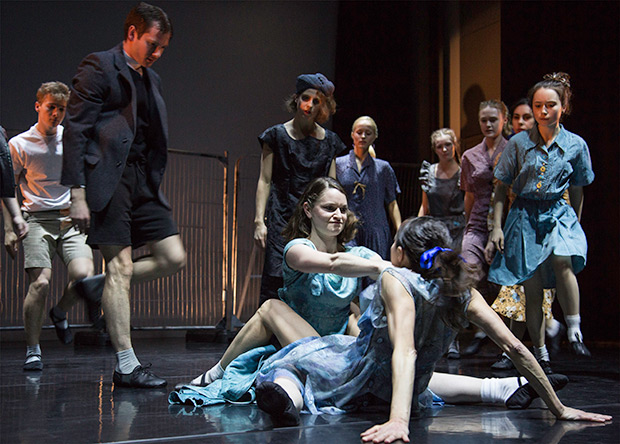
© Pari Naderi. (Click image for larger version)
Yorke Dance Project
Twenty: Playground, Between and Within, Communion, Imprint
★★★★✰
London, Clore Studio, Royal Opera House
16 May 2019
Yolande Yorke-Edgell interview
www.yorkedance.com
www.roh.org.uk
Yorke Dance Project has been celebrating its 20th anniversary by involving guest artists associated with the company, as well as dance students from Rambert and Central Ballet schools. By swelling the numbers of her small touring company, Yolande Yorke-Edgell was able to mount a revival of Kenneth MacMillan’s Playground and a 10-strong ensemble for Robert Cohan’s Communion. The Clore Studio programme that ended the tour included new works by Sophia Stoller and Yorke-Edgell herself.
The Royal Opera House honoured the company’s anniversary and the performances of a ballet by its past director and principal choreographer by providing a comprehensive programme booklet, similar to those for the Linbury Theatre downstairs. The Clore Studio upstairs now has upholstered seats instead of uncomfortable benches, slightly reducing its audience capacity from 170.
Playground, created for the Sadler’s Wells Royal Ballet in 1979, was able to have its set – a wire-mesh fence surrounding a courtyard on three sides. The enclosure could be a school playground or an exercise yard for the inmates of a mental asylum. Its occupants are confined together, as they were in MacMillan’s early ballet, The Burrow. Are they children, wearing an assortment of old-fashioned clothes, the boys in short trousers, the girls in dresses with peter-pan collars? The set and costumes by Charlotte MacMillan are based on the original designs by Yolanda Sonnabend.
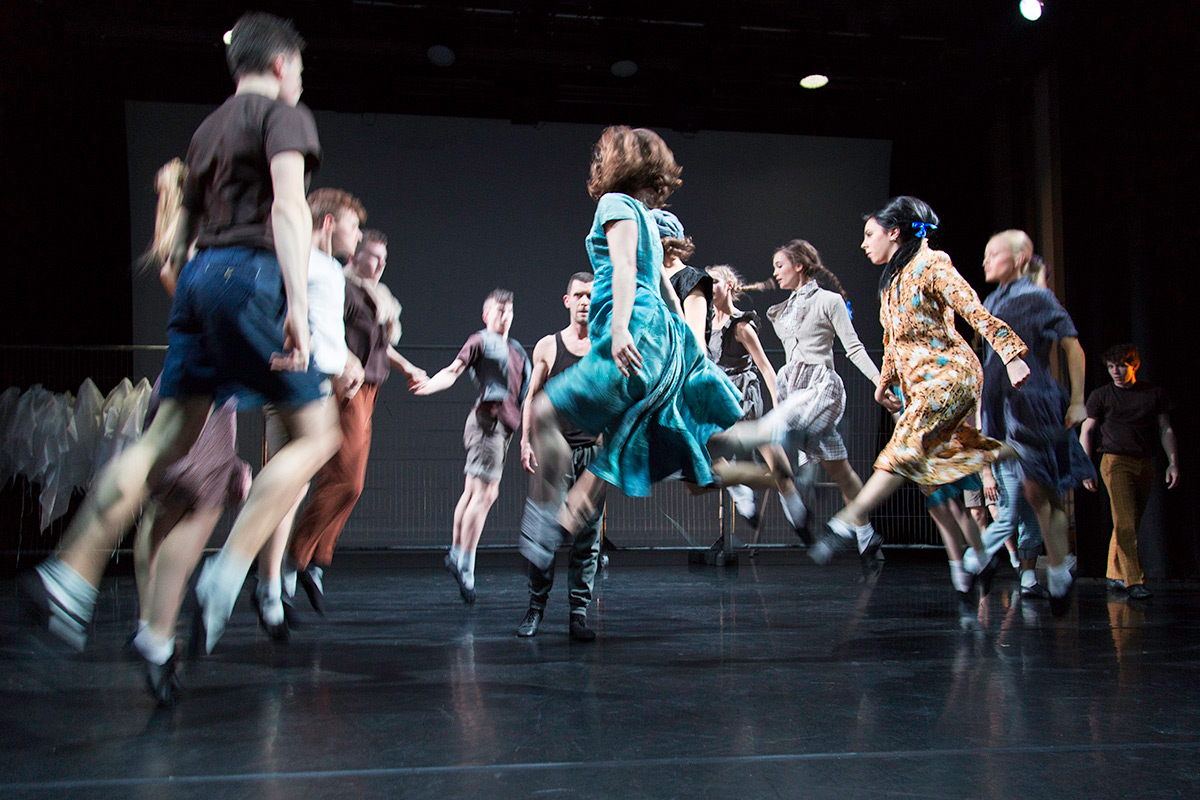
© Pari Naderi. (Click image for larger version)
The cast behave like children playing at being grown-ups. At their centre is a girl clutching a handbag (Oxana Panchenko on Thursday night). She didn’t daub her face with the make-up it contained, as Marion Tait did in the 1979 production, creating a mask of pathos. A mother figure, Freya Jeffs, treats her like a baby, smacking and burping her. The others stop their clapping game to bully the vulnerable girl, snatching her handbag away.
Enter an intruder (Jordi Calpe Serrats on Thursday), who is evidently an adult. In the 1979 version, the man, Desmond Kelly, climbed over the fence instead of entering through it: he might have been Orpheus, coming to rescue Eurydice from the underworld. (MacMillan’s next ballet was Orpheus, to Stravinsky’s score of the same name.) The intruder seems to know the girl already, restoring her handbag to her and trying to bring her to her senses. It’s clear by now that the ‘children’ are adults in a psychiatric institution, acting out childish behaviour.
MacMillan was fascinated by the callousness of children, whose unthinking cruelty could be carried into adult life. He was appalled at how a mob mentality could take over a group of individuals, culminating in murder, as in his ballets My Brother My Sisters and The Judas Tree. In Playground, the inmates, each with their own disturbed personalities, turn en masse on the outsider, flooring him then mocking him. One of the gang straddles his back, riding him like a donkey. Is the man a forerunner of the maligned saviour, the Jesus figure in The Judas Tree?
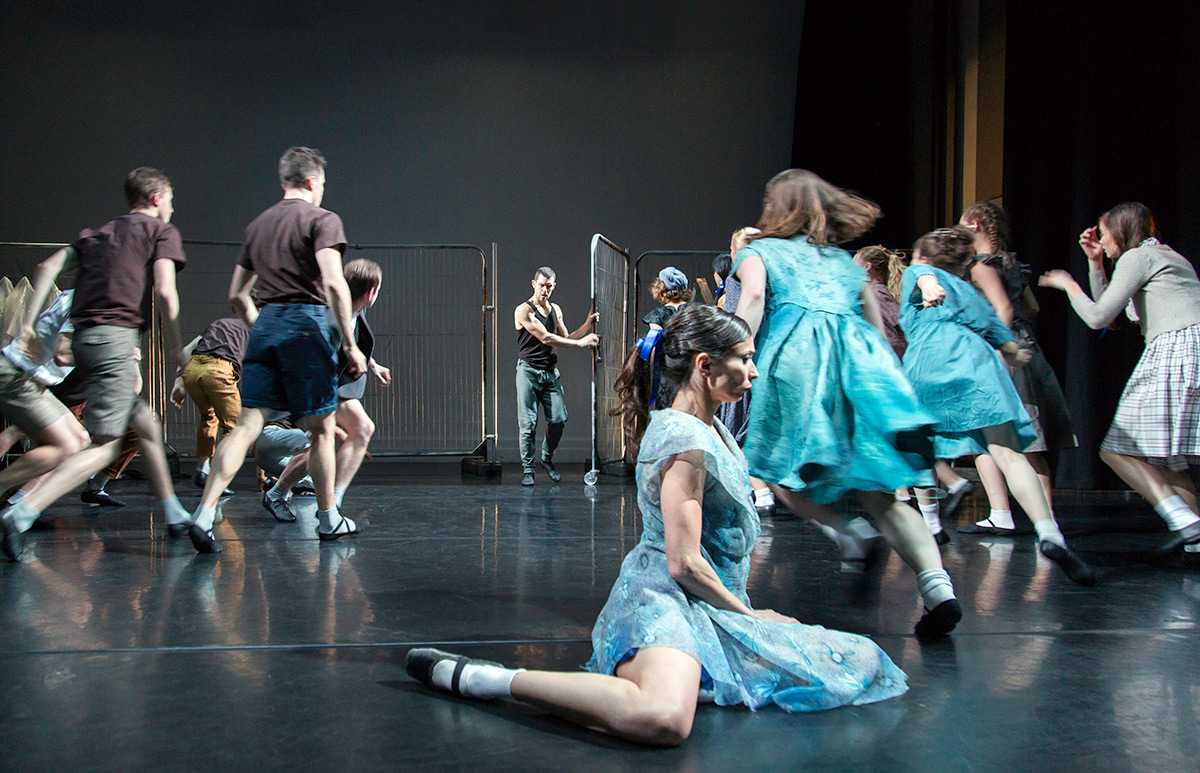
© Pari Naderi. (Click image for larger version)
The young woman he had hoped to rescue is scared and disoriented by his attempts to dance with her; then, aroused, she clings to his legs. When he is attacked, she lunges awkwardly on pointe, barely capable of balancing, before her feet carry her backwards in bourrées. She collapses in spasms, restrained by the ‘mother’, who might have seen her have fits before. A pair of inmates pretending to be a vicar and his wife (Ben Warbis and Abigail Attard Montalto) pray over the apparently lifeless body of the girl, covering her with a shroud. The cloth is pulled off by the over-excited inmates, who are corralled into white coats by a supervising doctor and nurse.
The girl, who has recovered after her fit in a fugue state of bewilderment, is taken inside with the others – a Eurydice this Orpheus was unable to save? He has been pinned into a straitjacket and abandoned in the yard, hitting his head against the wire fencing. MacMillan was questioning who was sane and who certifiable. He was also revisiting the fate of the outsider in his ballets, isolated and misunderstood. Like The Judas Tree, 13 years later, Playground is not easy to watch or interpret at a first viewing – but it has been restored to the MacMillan canon, thanks to a dedicated production team: Jane Elliott, notator and reconstructor; Susie Crow and Stephen Wicks, former SWTB members; and of course, the dancers.
Gordon Crosse’s music score from 1978, digitised for this revival, is almost hallucinogenic in its references to children’s songs and dancing games. Crosse drew on traditional tunes and nursery rhymes he had adapted for a children’s opera, Potter Thompson, with a libretto by Alan Garner. The instrumentation uses handclaps and different kinds of bells, chimes and small drums, sometimes sinister, sometimes sweet or chaotic, eerily distorted like childhood memories – perfect for MacMillan’s haunted Playground.
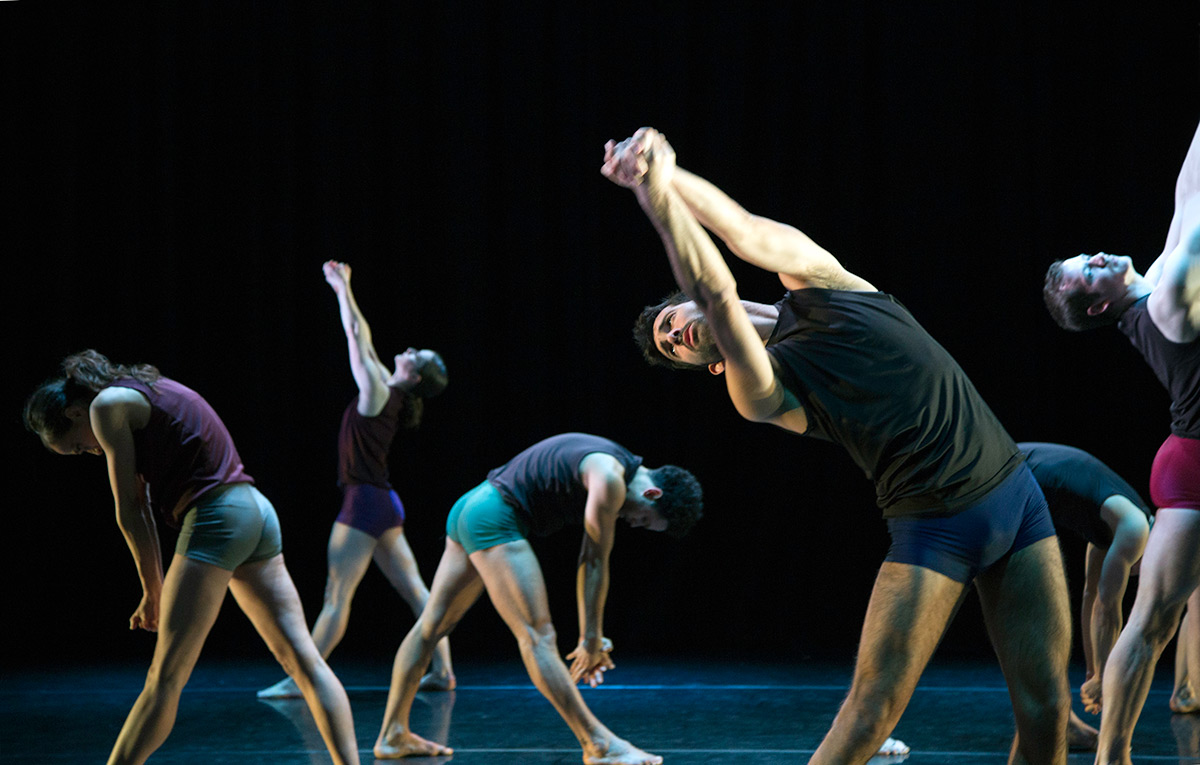
© Pari Naderi. (Click image for larger version)
The theme of the individual versus the community recurs in Cohan’s Communion, his seventh work for Yorke Dance Project. Now 94, he was recalling a work, Mass, that he had made for London Contemporary Dance Theatre in the 1970s. Like other choreographers influenced by Martha Graham, Cohan is intrigued by rituals, religious and otherwise. Such group activities can exacerbate the inner loneliness of the individual who feels that he or she doesn’t belong or feels differently from the rest.

© Pari Naderi. (Click image for larger version)
Communion starts with the inexorable pacing of ten celebrants, to music by Nils Frahm, a mix of piano and synthesised sound. As the ensemble strides towards the audience and back again, a single figure (or maybe two) is left stranded, only to be reabsorbed in the next wave of walkers. The celebrants kneel, pray, lie prone or raise their arms heavenwards. They sit on a line of chairs at each side, slapping their shoulders in self-flagellation.
Four men dance together in martial exercises of balance, torque and twist. Three women skip and sway, moving gracefully in triplet runs. In between come solos expressing individuals’ doubts and yearnings. Dane Hurst seems to be atoning for sins he has committed; Laurel Dalley Smith curves in on herself, quivering and questioning God’s cruelty; Jonathan Goddard is a charismatic seer, drawing power from the earth in deep pliés and reaching for the sky. He embodies the group’s desire to bear testament to a faith greater than themselves, even though he is cast down by the end of his aspiration.
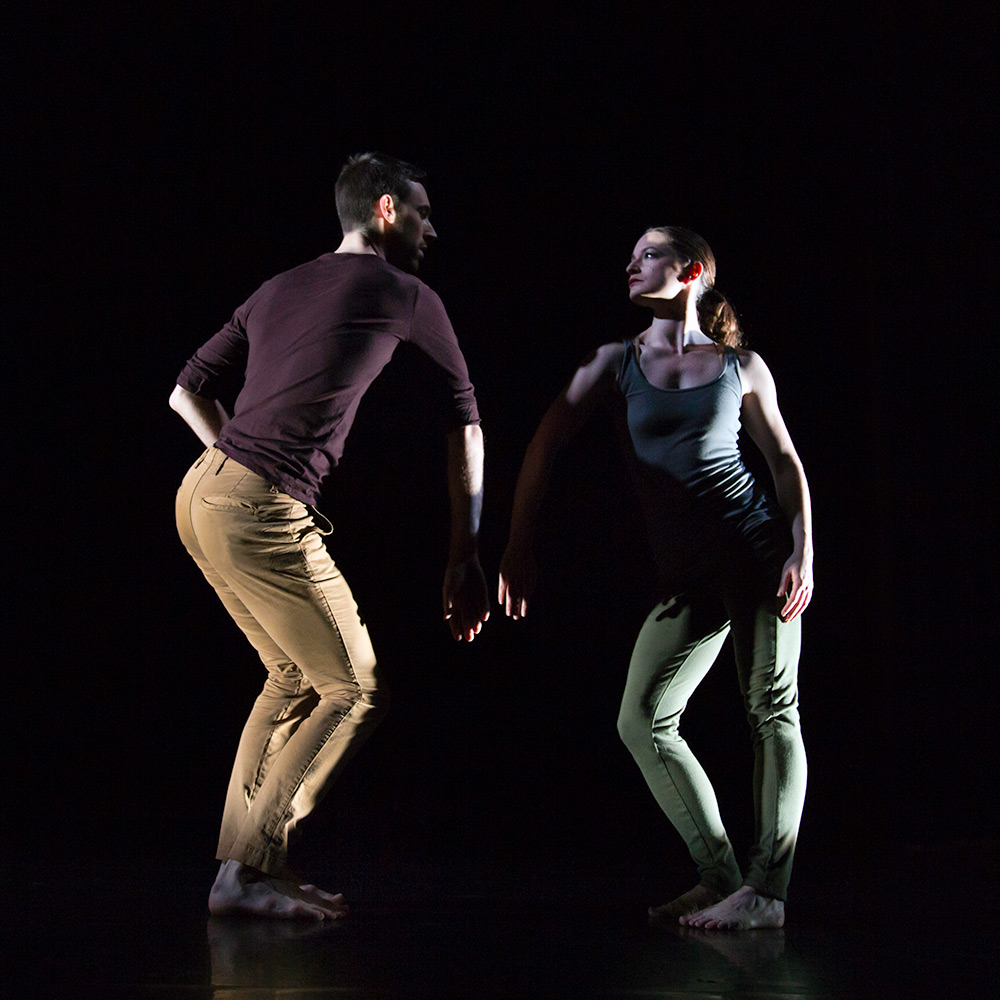
© Pari Naderi. (Click image for larger version)
Cohan’s belief that dance must have something to say about the human condition is reflected in the Cohan Collective project that Yorke-Edgell founded with him. As a result of its first residency for choreographers and composers in Los Angeles, she commissioned a quartet, Between and Within, from Sophia Stoller, with music, played live, by Justin Scheid. Two couples investigate the complexities of their relationships, interacting, recombining and never quite resolving their differences. Edd Mitton with Freya Jeffs and Dane Hurst with Abigail Attard Montalto were convincingly committed, but this long programme would have been more coherent without it.

© Pari Naderi. (Click image for larger version)
The evening ended with Yorke-Edgell’s tribute, Imprint, to her mentors during her 30 years as a professional dancer. As well as Cohan, she acknowledged the lasting influence of Richard Alston and Bella Lewitzky, in both of whose companies she had been a dancer. Along with present members of her own company, she invited back past members and guest artists for a jubilant finale.
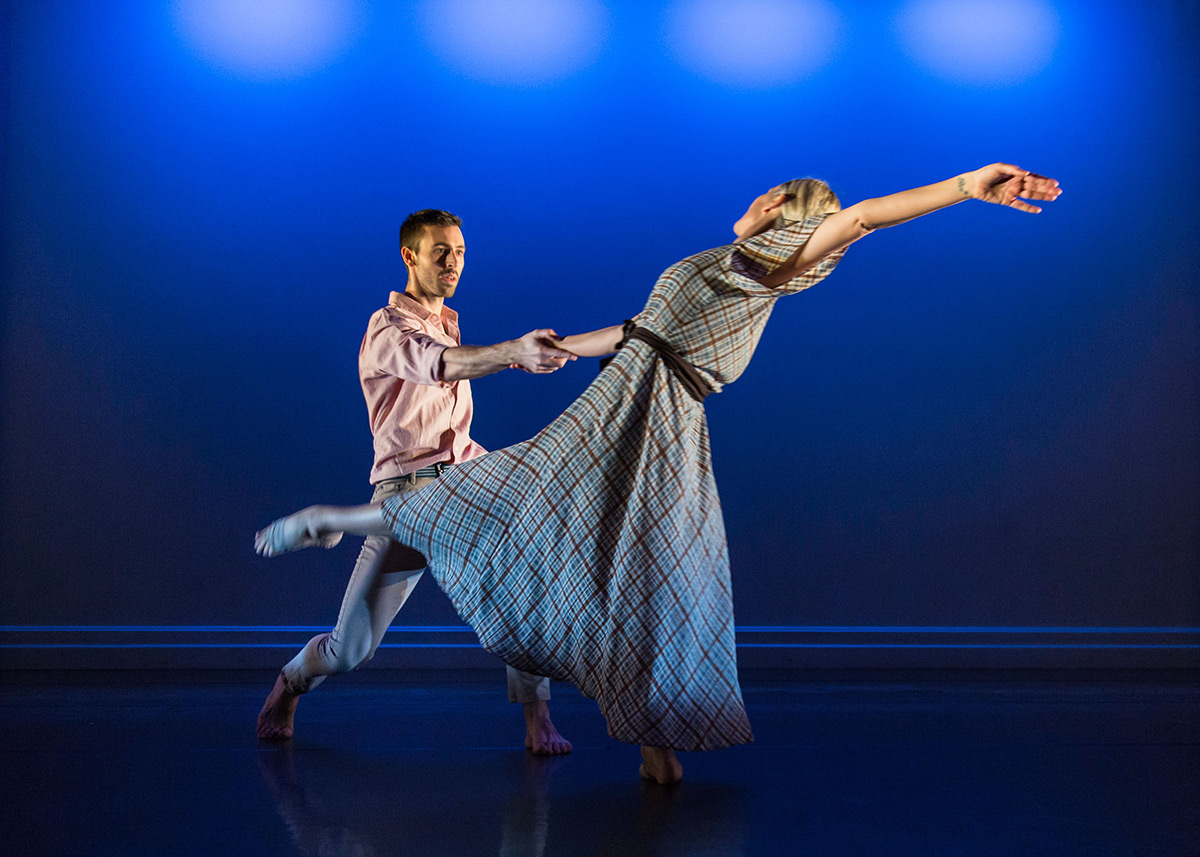
© Pari Naderi. (Click image for larger version)
Three sections were each devoted to evoking her chosen choreographers’ imprint on her physical memory of their work. The result was a sequence of disconnected dances, set to the recorded voices of her mentors and music by Bach, Heiner Goebbels, Kenneth Hesketh and Max Richter’s arrangement of Vivaldi’s Four Seasons (yet again). Whether or not you could spot the source of each section (was the Martha Graham-like solo a homage to Cohan or Lewitzky?) the dancers rejoiced in structured dance combinations that made good use of their skills. Yorke-Edgell values the legacies of choreographers who evolved their own techniques to create their work. Unlike some artistic directors, she isn’t concerned with novelty for its own sake.












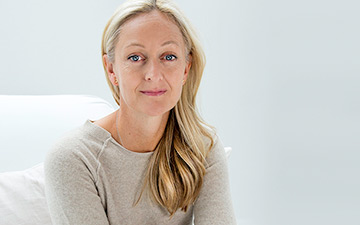

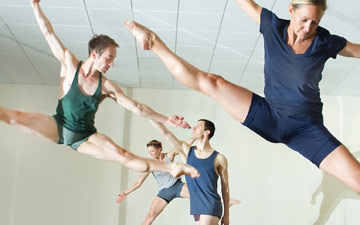
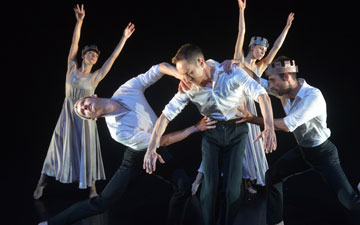
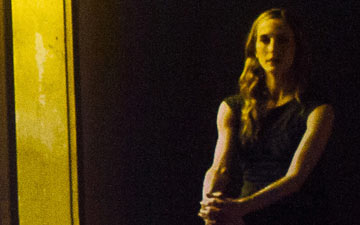
You must be logged in to post a comment.